Lithium batteries are efficient, long-lasting options for various personal and professional applications. Understanding how to store lithium batteries is crucial to avoid potential risks linked to their inefficient storage and handling. Proper storage is inevitable to prolong their lifespans and protect the environment.
Charging your devices on the go becomes inevitable, and this is where a battery power station like Jackery Portable Power Stations helps. They are equipped with powerful LiFePO4 or NMC batteries to keep your devices charged and ready to use anytime.
Key Takeaways
- Properly storing lithium batteries is essential to ensure their safety and longevity. On the other hand, not focusing on lithium battery storage can result in the release of harmful chemicals and gases that are detrimental to the environment.
- Focusing on temperature, humidity, charging level, airflow, etc., can help you effectively and safely store a lithium battery.
- There are multiple ways to store a lithium battery, including creating an ideal environment, employing safe handling practices, monitoring charge levels, etc.
- Taking into account the storage measures based on the intended application (daily use or factory purpose) can ensure better battery lifespan and effective handling and solve concerns regarding how to store lithium-ion batteries.

Factors to Consider for Storing Lithium Batteries
Lithium-based batteries need proper attention because improper storage can result in overheating and fire hazards, which can be dangerous to the environment and humans. Proper battery storage can lead to increased lifespan, safety, fast charging time, and efficient operation. Here are some key factors to consider when storing batteries.
Temperature
The ideal temperature to store a lithium battery pack is 10°C to 25°C (50°F - 77°F). In this temperature range, the battery works comfortably and safely, ultimately guaranteeing high efficiency. Storing outside this temperature range can lead to faster self-discharge and demand more maintenance. These batteries must be stored at approximately 40-50% (SoC) to let them readily be used anytime.
Here’s a table highlighting the 40% and 100% SoC at different temperature levels.
|
Storage Temperature (°C) |
40% State of Charge (SoC) |
100% State of Charge (SoC) |
|
0 |
38%(one year later) |
94%(one year later) |
|
25 |
36%(one year later) |
80%(one year later) |
|
40 |
32%(one year later) |
65%(one year later) |
|
50 |
25%(one year later) |
60%(one year later) |
Light
Exposure to light can damage the performance of a lithium battery. This doesn’t mean storing it in complete darkness but limiting the exposure to light as much as possible.
Exposure to natural sunlight can damage the battery cosmetically. Bringing the battery from natural sunlight to a room can cause temperature changes that could negatively affect its internal workings.
Try to decrease exposure to excessive direct sunlight or harsh sunlight. Keeping your lithium batteries in a cool, covered place can ensure safe handling. This approach, when followed regularly, can increase their lifespan.
Humidity
The ideal humidity required for storing lithium batteries is 50%. Condensation can accumulate between the terminals, and in extremely wet environments, it can create a short circuit, leading to fire hazards and overheating issues. To ensure safe storage, ensure the battery’s terminals have separate covers.
Airflow
Enough ventilation is inevitable to ensure a lithium battery's safe operation and storage. When storing your lithium battery in a closed space like a storage shed or a garage, ensure proper airflow is maintained. The proper airflow can decrease particulates in the air and maintain fresh air circulation around the battery.
Slightly open the windows of the garage/shed/room where you store the battery. This will allow enough airflow to maintain freshness around it. You can install screens or vents to ensure adequate air circulation and avoid overheating.
Physical location
Wisely choose where to keep your lithium battery. Don’t rest it directly on the ground, as this can cause discharge and natural overheating. Storing a lithium battery on a rack with slats or tiny holes allows air exposure on all sides.
Don’t store it in a metal wire rack because metal can lead to short-circuit. Ensure you store it far from any potentially flammable items like curtains, cardboard, carpets, gasoline, wood, aerosol cans, textiles, etc.
Charge level
Maintaining a proper charge level for a lithium battery is inevitable to ensure its safe storage and safe use in the future. If you intend to store it for a long period, charge it to approximately 60 – 80% capacity. Since lithium batteries self-discharge over time, note down when you put them in storage to ensure safe handling for the long term.
How to Store Lithium Batteries Safely
Safe storage of lithium batteries helps them work more efficiently and provide a long lifespan. This approach ensures no harm to the environment or the people around it. Following safe storage strategies can be beneficial for both daily use and industrial applications. To learn how to store lithium batteries, follow the tips below.
Organize Batteries by Type and Age
The first step is to begin categorizing your lithium batteries according to their age and type. Make sure to keep lithium-ion batteries away from other types of batteries, as this could lead to chemical interactions.
Grouping batteries of the same age helps in rotation and ensures older batteries are utilized first. Prepare a label for each battery, mentioning its type and the date of purchase. These strategies will enable easy battery storage and allow you to monitor their life cycles easily.
Create an Ideal Storage Environment
Storing lithium batteries in a controlled environment is inevitable. Consider storing them at up to 25°C (77oF). You can prioritize storing these batteries in a dry environment with a humidity level below 50%. Additionally, proper airflow within the storage area is crucial to avoid overheating.
Implement Safe Handling Practices
Improper handling can pose security threats to battery storage. Always handle the batteries with dry, clean hands to avoid the buildup of contaminants or moisture. Gently move the batteries from one place to another to deter physical damage. Storing multiple lithium batteries is possible using non-conductive dividers, avoiding inadvertent contact between terminals.
Temperature Control
The lithium batteries are quite sensitive to extreme hot and cold conditions. Avoid storing them in an environment with extreme heat or cold. Storing in an extremely hot environment can create internal expansion and battery damage. Try to store them away from direct sunlight or near heat sources.
Storing in an extremely cold environment will affect the battery’s ability to hold a charge. However, it is possible to store it in a cold environment, provided you warm it up before use. Always prioritize storing the batteries in a temperature-regulated room/storage shed/cabinet.
Humidity Management
Focusing on humidity management can solve concerns about how to store lithium-ion batteries. Storing these batteries in a dry environment is recommended to avoid potential short circuits and corrosion of battery terminals.
Store the batteries in places with low humidity. If the climate is humid, you can use humidity absorber packs or dehumidifiers within your storage containers. A humid environment will reduce the batteries’ lifespan and negatively impact their efficiency.
Maintain the Charge Level
Make sure your lithium-ion batteries are neither fully discharged nor fully charged. The ideal charge level for storage is nearly 40-50% of their capacity. Storing them at full charge capacity can lead to a quick loss of capacity over time. Irreversible damage occurs to the batteries when they are stored after being fully discharged. Regularly check and maintain the charge level to ensure optimal efficiency.
How to Store Lithium Batteries in Cold Weather
It is important to make proper arrangements for lithium-ion batteries when storing them in cold weather. At low temperatures, these batteries could quickly lose charge and find it challenging to maintain the ideal temperature for charging. If you are looking to learn how to store lithium batteries in cold weather, follow the storage tips below.
Temperature-Controlled Place
Always try to store lithium batteries in a temperature-controlled or insulated place. If such a place is not available, warm up the batteries before using them and charge them periodically to retain the charge level.
You can store your lithium batteries in a warm storage room or a heated garage in cold weather. If such places are inaccessible, you can store the batteries in battery blankets or heating pads to retain warmth.
Insulation Solutions
Overheating is one of the major causes of battery damage. To avoid overheating issues, make sure the enclosure is properly ventilated. You can also use additional insulation to prevent the batteries from getting extremely cold.
Choose a battery box or insulated container that fits your batteries perfectly. An extremely large insulated container will facilitate cold air circulation around the lithium batteries. Prioritize buying an insulated, durable container with a proper seal mechanism to keep away cold air.
Monitor the Charge Level
Always ensure the lithium battery is at room temperature before charging it. Charging it below 0°C (32°F) can lead to permanent damage and battery freeze. Overheating is one of the key causes of battery damage, swelling, explosion, or leakage. Henceforth, maintaining a charge level is inevitable to ensure high efficiency.
How to Store Solar Lithium Batteries
Solar batteries can be installed indoors or outdoors, depending on several factors, including the battery's IP rating, the weather, and weight. Solar lithium batteries offer various advantages, including a long lifespan, fast charging, and high energy density. Properly storing them is essential to ensure safety and maximize their performance. It may be confusing to determine whether to store them indoors or outdoors. Let’s understand in detail.
How to Store Solar Batteries
Storing solar lithium batteries indoors can be safe, provided you follow certain precautions. Make sure the storage area is dry, cool, and airy to avoid fire hazards and overheating. When storing indoors, keep them from flammable materials and prevent exposure to direct sunlight/heat sources.
On the other hand, if outdoor storage is inevitable, store your lithium batteries in insulated, waterproof enclosures. This approach avoids damage from moisture buildup, extreme temperatures, and high humidity. When storing the batteries outdoors during winter, use additional insulation to ensure they don’t get too cold.
Generally, indoor storage (with proper storage arrangement) is recommended over outdoor storage as it maintains a consistent environment and efficiency. Storing outdoors can deteriorate battery performance and lifespan.
Types of Solar Batteries
Four major types of solar batteries are lithium-ion batteries, lead-acid batteries, nickel-based batteries, and flow batteries. Let’s discuss each type in more detail.
Lithium Ion Batteries
Lithium-ion batteries are best for residential solar installations because they can hold more power in a restricted space. They need little maintenance and provide a long lifespan. You should store them in a cool, dry, and dark place, away from the heat source, sunlight, and humidity.
Jackery Explorer 1000 Plus Portable Power Station can efficiently charge 99% of your devices on the go. It is equipped with a high-quality LiFePO4 battery that can be easily stored. Besides, you can use a Jackery Smart app to monitor the battery status on your smartphone.
Lead Acid Batteries
They provide high reliability and are generally used for off-grid solar systems. They also come in handy for emergency backup storage during a power outage. To avoid acid leakage, you can store lead-acid batteries in a bounded area undercover.
Nickel-Based Batteries
Nickel-based batteries are widely used for large-scale applications, including solar energy storage. They are durable and need little maintenance. The ideal storage temperature is 10°C (50°F). To ensure safe storage, keep them in a battery storage box or original pack to avoid short circuits to the terminals.
Flow Batteries
Flow batteries are commonly used for large-scale installations. They ensure minimal fire risk and a long lifespan (up to 30 years). The ideal temperature range for storage is 15°C to 25°C (59°F - 77°F). Store them in a dry, cool place. Regularly review the concentrations of the electrolyte solution and replace them when required.
Jackery Portable Power Stations Explained
If you want to keep your devices charged on the go, you will require an efficient and reliable portable power station. Jackery is a well-known solar brand that manufactures portable power stations, solar generators, and solar panels. Jackery Portable Power Stations provide an easy-to-use, efficient, and portable energy source to charge your devices anywhere.
They contain rechargeable LiFePO4 batteries that store energy and charge your devices on the go. These batteries ensure stability, safety, and a long lifespan. Besides, their built-in batteries are implemented with advanced high-temperature resistance technology to ensure safe and efficient use even at high temperatures.
Jackery Explorer 100 Plus Portable Power Station
Jackery Explorer 100 Plus Portable Power Station is a compact power station capable of charging a wide range of devices with its multiple ports. Weighing only 965g, it can easily fit in a bag and comfortably carries outdoors. Its operation is emission-free and whisper-quiet.
Appliances Running Time
- MacBook (30W): 2.8H
- Smartwatch (1.2W): 70.2H
- iPad (29W): 2.9H

Customer Review
“Bought for traveling, wife decided she loves it, and now I have to buy a second. Fast charges IPAD pro and phone without any issues.” -Mike Jones.
Jackery Explorer 1000 Plus Portable Power Station
Jackery Explorer 1000 Plus Portable Power Station is a portable power station with long-lasting, reliable battery cells. It is an all-in-one power station with multiple ports to charge almost all your devices on the go. It supports a fast charging mechanism that helps you to charge your devices anywhere swiftly.
Appliances Running Time
- Car fridge (60W): 17.9H
- Projector (100W): 10.7H
- Speaker (30W): 35.8H

Customer Review
“We have a generator at home, so we were set when the power went out two days after getting the Jackery, but I took it over to the neighbor’s house, and they were happy to have some power for several hours.” - Robert DeBerardinis.
Lithium Batteries Storage Measures
Lithium-ion batteries provide long lifespans and boast portable designs, making them well-known among small and large firms. However, not following storage measures can invite danger and make your investment futile. Here are some key storage measures for daily and factory use.
Storage Measures For Factory
Understanding storage measures is inevitable if you plan to store lithium batteries in a factory. The surrounding area may be vulnerable to threats and unforeseen accidents. Here are some key storage measures before storing the battery in a factory.
Battery Warehouses Establishment
Make sure to set up battery warehouses independently. At the storage places, you can put “No Fireworks” signs in attractive designs. Don’t stack flammable items around where you store your lithium batteries.
Ensure Temperature and Humidity Control
The battery warehouses’ temperature must be controlled between 20°C and 25°C. Even in extreme weather conditions, the temperature must not surpass 30°C. The humidity level must be under 75%.
Storage Measures For Daily Uses
Regular use of lithium batteries means maintaining a proper charge level and ensuring efficient operation. You also need to ensure they work reliably without threatening the surrounding environment. Here are some key storage measures for the daily use of lithium batteries.
Ensure Regular Recharging
If you aim to store lithium batteries for a long period, ensure the charging level is between 50% and 60%. Maintaining regular recharging is also vital. The batteries must be recharged every 3 months to ensure a long lifespan.
Remove the Inefficient Battery
If your lithium battery releases an odor or shows signs of distortion or discoloration during storage, make sure to instantly remove it from your device. Subsequently, disable it to avoid damage to the environment.
Lithium Batteries Maintenance Tips
Regular maintenance of lithium batteries ensures they will continue working efficiently for a long period. Proper maintenance and care can alleviate the effects of battery aging. These strategies usually involve regular checks, replacing defective batteries, preventing overcharging, etc.
Regular Check
Periodically check the unused batteries to guarantee optimal battery performance. Batteries idle for a long period can lead to self-discharge and adversely impact their performance. The regular check helps you determine what to do if the batteries become defective. The vapors released from the batteries should not be inhaled.
Lithium Battery Spill Cleanup
A damaged lithium battery can spill its contents. To protect any individual approaching the spilled content, precautions should be taken. The surrounding area must be evacuated, and an expert should handle the situation.
Charge Periodically
Charge the battery to 30% or 70% and then store it. The aforementioned charging level protects the battery from damage. Recharge the batteries after three months of storage. Pay attention to the periodic charging to make the battery efficient and save your investment.
Avoid Frequent Overcharging
Turn off the charger once the battery’s charging level reaches optimum. Now, put it in the charger for sufficient time. Frequent overcharging will reduce the battery's lifespan and even make the charger hot. Avoiding frequent overcharging will solve the concerns about how to store lithium-ion batteries.
Lithium Batteries Storage FAQs
Should the battery be removed from the device when not in use for a long time?
Yes, the battery must be removed from the device when it is not in use for a long period because some current flows through the shutdown device. This current causes a complete discharge, which can damage the battery and the device over time.
Should I store lithium batteries fully charged?
No, lithium batteries in a fully charged state generate more internal stress. This can degrade the internal components and raise the risk of leakage and/or swelling. So, make sure you don’t store lithium batteries fully charged.
Is it okay to store lithium batteries in the garage?
Yes, you can store lithium batteries in the garage, but maintain proper airflow to decrease particulates in the air and keep the environment around the battery fresh. Installing screens or vents can maintain fresh air and prevent the battery from becoming excessively hot.
How long can a lithium battery sit unused?
A lithium battery can remain unused for up to 6 months. If your battery has been unused for several months, check its charge status regularly to avoid potential device and environmental risks.
Where is the safest place to store lithium batteries?
The safest place to store lithium batteries is dry, cool, and temperature-controlled. A place away from heat, sunlight, and humidity will ensure their safety. You can store them in a metal box or a fireproof container to prevent overheating and potential fires.
Final Thoughts
Lithium-ion batteries are quite popular for many applications owing to their efficiency, long lifespans, and lightweight designs. Knowing how to store lithium batteries ensures the safety of individuals and the environment. The corresponding storage tips avoid potential risks like fire hazards, discharge of harmful gases, short circuits, and chemical leaks.
Keeping your devices charged on the go is crucial to staying safe during emergencies. If you are looking for a high-quality power station with LiFePo4 or NMC batteries, you may consider the Jackery Portable Power Station. Investing in the power station ensures you can reliably and efficiently charge your devices anywhere.
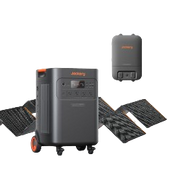
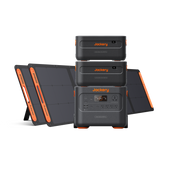
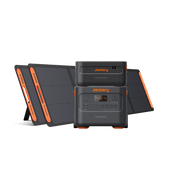
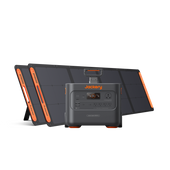

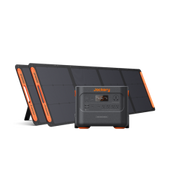
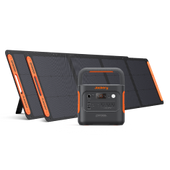

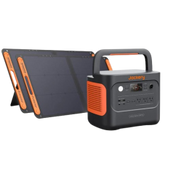
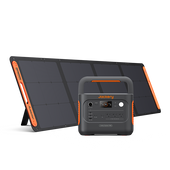
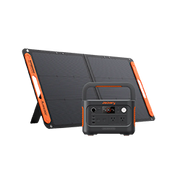

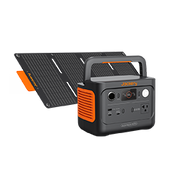
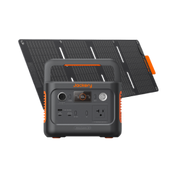
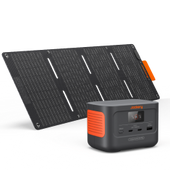
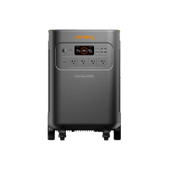

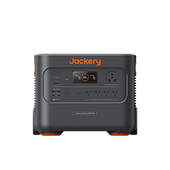
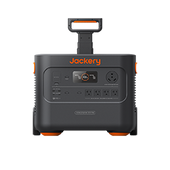
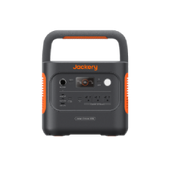
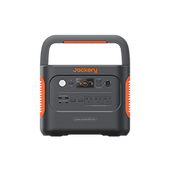
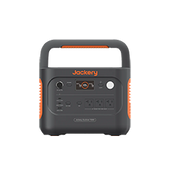

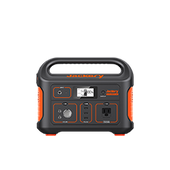




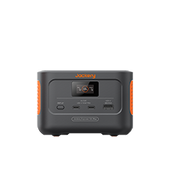










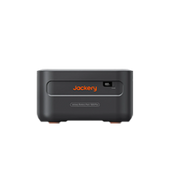




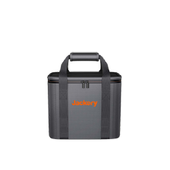








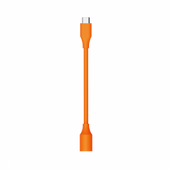

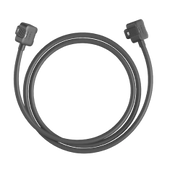

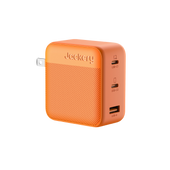

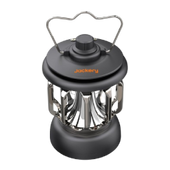




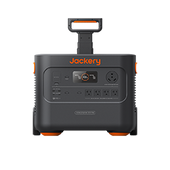

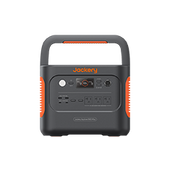
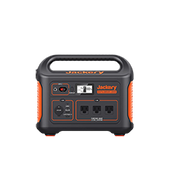

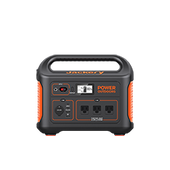

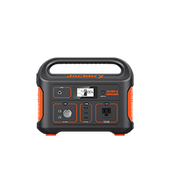

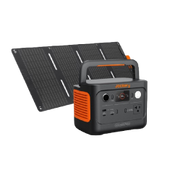







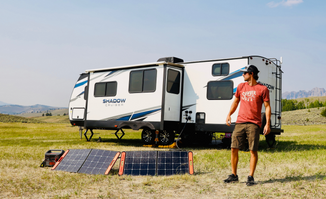












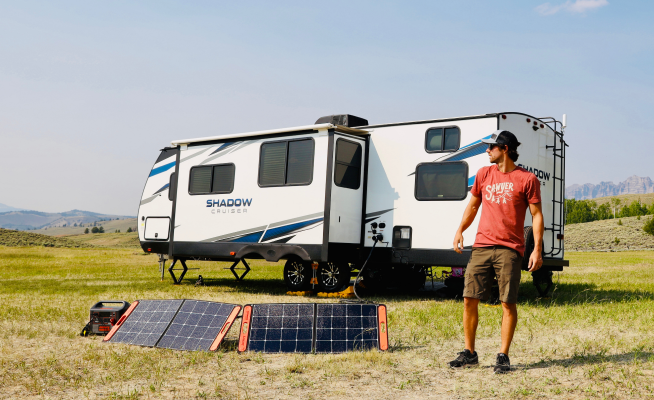





















Leave a comment